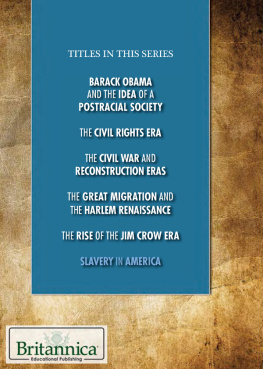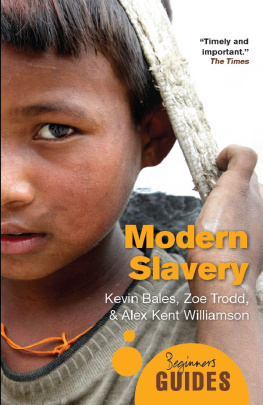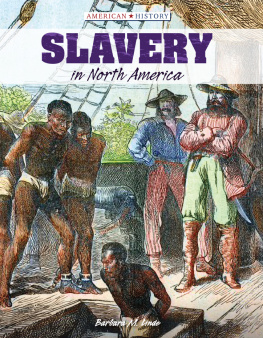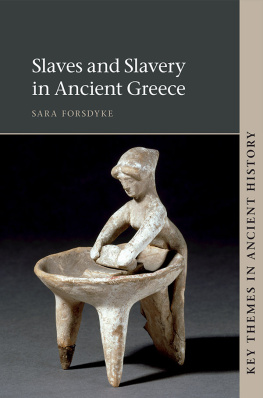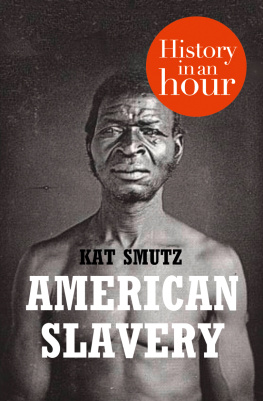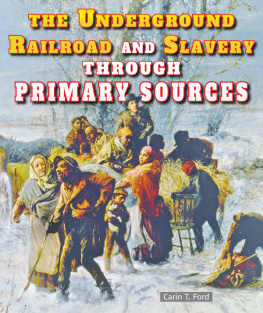
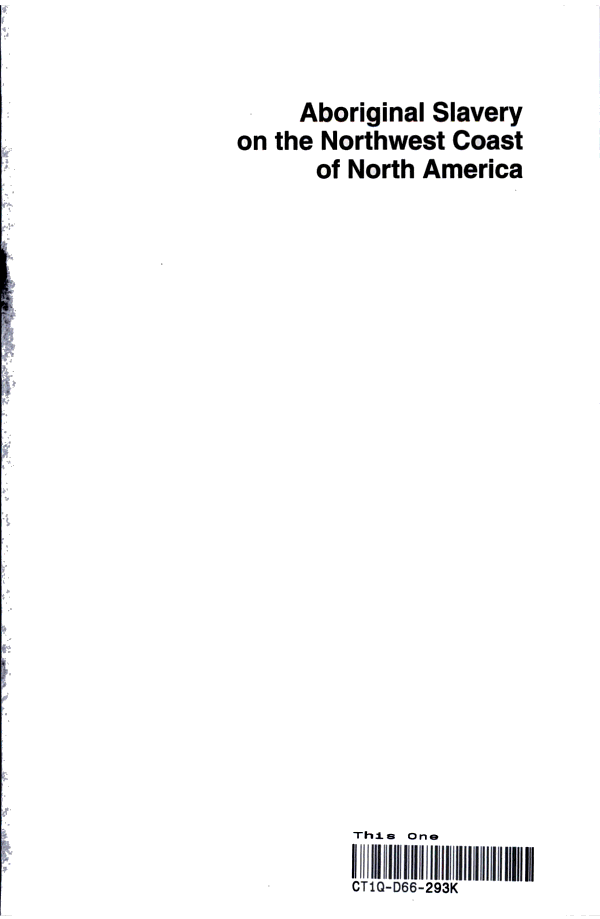
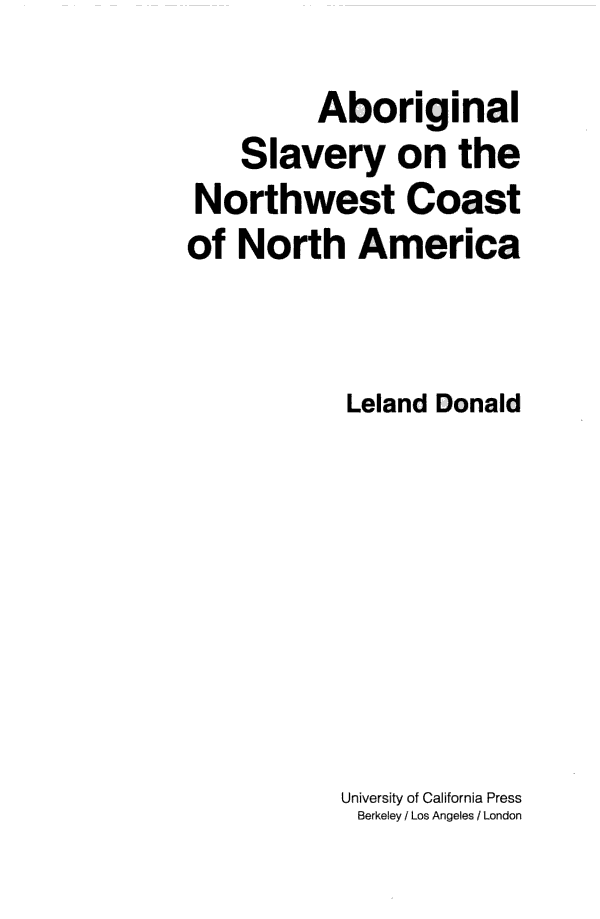
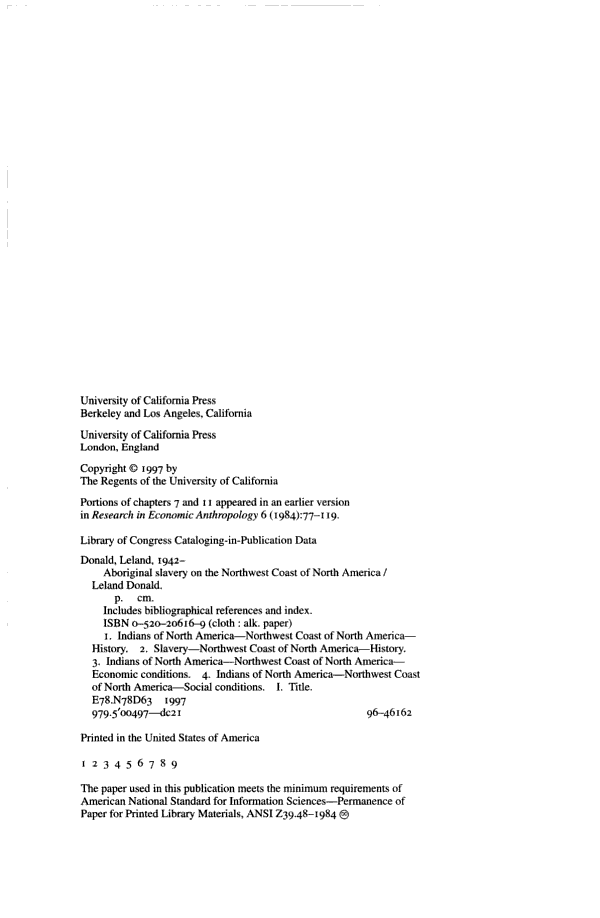
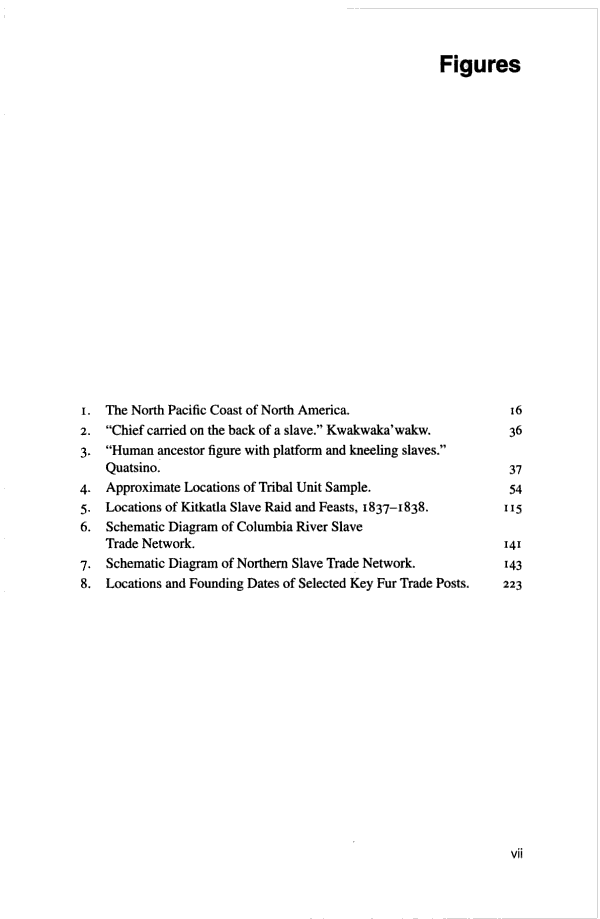
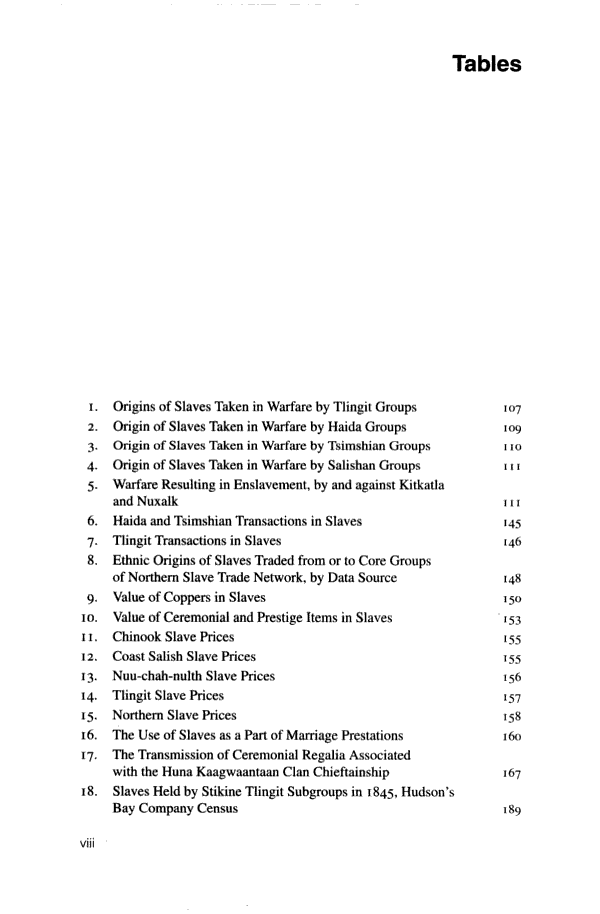
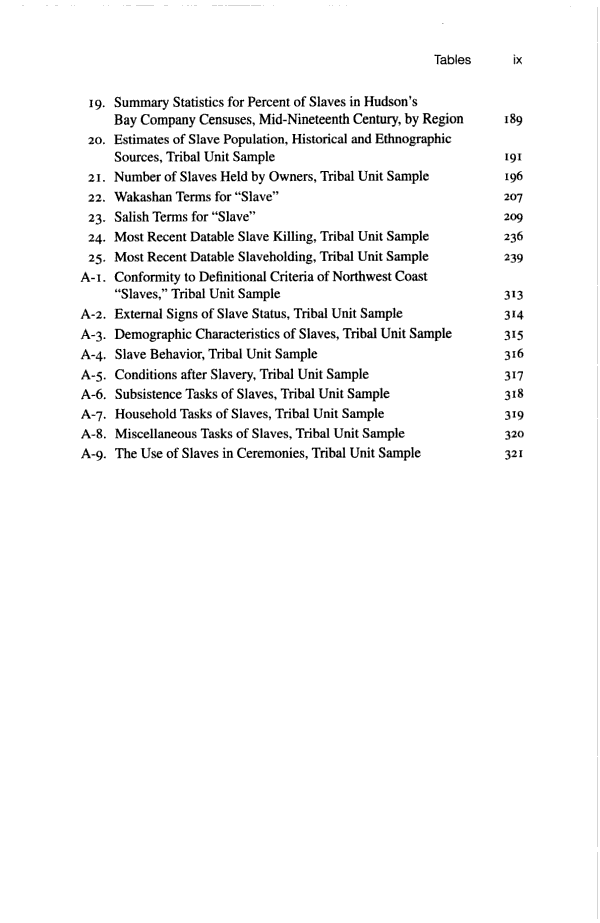
Preface
The purpose of this book is to describe and analyze the practice and institution of slavery among the aboriginal inhabitants of the North Pacific Coast of North America. In ethnographic terms this is one of the most famous regions of the world: it is the Northwest Coast culture area, the locus of the potlatch, and the focus of the ethnological investigations of Franz Boas, a key figure in the history of anthropology.
Although slavery is mentioned in the earliest sources on the region and never completely ignored in subsequent ethnography, it has never received full and careful treatment. This book remedies this omission. More, it argues that slavery is one of the key culture traits that must be fully understood if the Northwest Coast culture area is to be properly appreciated. The importance of slavery is implied in A. L. Kroeber's significant but relatively neglected 1923 essay, "American Culture and the Northwest Coast." Despite continuing brief descriptions in subsequent ethnographic works and a few publications that aimed at more substantial treatment of the topic, neither Kroeber nor anyone else has followed up the problem of slavery in the culture area in the detail that it requires.
If this book is primarily an anthropological analysis of one domain of culture on the Northwest Coast, it is also intended as yet another contribution to the already voluminous literature on slavery. Slavery scholarship is dominated by works describing and analyzing New World plantation slavery, although slavery in the "ancient world," primarily Greece and Rome, is the subject of a considerable literature also. Discussions of slavery in other parts of the world or at other time periods are much less numerous. In particular, there is very little discussion of slavery and other types of servitude in nonstate or prestate societies. (See, for example, the paucity of entries relating to these types of societies in Joseph Miller's periodic bibliographies published in Slavery & Abo lition.) Thus this book contributes to our understanding of human slavery and of slave systems by focusing on a usually neglected facet of the multifarious appearance of involuntary servitude.
I should make my relationship to the tradition of Northwest Coast scholarship clear. I was not trained as a Northwest Coast scholar or even as an Americanist. At the University of Oregon, where I received my Ph.D., my regional ethnographic specialty was sub-Saharan Africa, especially West Africa. I did my dissertation fieldwork in northern Sierra Leone and wrote my dissertation on one of the smaller ethnic groups in Sierra Leone, the Yalunka. As an undergraduate I had done two seasons of archaeological fieldwork in northern Georgia and learned some southeastern prehistory and ethnohistory but had decided to pursue cultural anthropology and non-North American ethnography in my graduate studies. Nevertheless, my first ethnographic fieldwork was done in North America, a summer among the Navajo in northern Arizona. At the time I thought of its importance primarily in terms of getting my feet wet as a fieldworker and not as Americanist experience to add to my previous archaeological work.
My introduction to the Northwest Coast came in a series of graduate seminars conducted at Oregon by David F. Aberle. The topic of the seminars was "cultural ecology," but wisely believing that a concrete focus was needed, Aberle chose to have us apply cultural ecological ideas to the Northwest Coast material. As a result of those seminars I learned a lot about cultural ecology and probably more than I realized about the Northwest Coast and then went off to "do" cultural ecological research in West Africa.
In 1969 I took a teaching job at the University of Victoria, where Donald Mitchell, who had also taken Aberle's cultural ecology seminars, was working. Mitchell was already a genuine Northwest Coast expert, actively working on both the prehistory and ethnohistory of the region. He wanted to pursue problems related to the resource base of Northwest Coast cultures and possible relationships between the resource base of various communities and other sociocultural variables. When the opportunity came to try to tie fluctuating salmon resources to other variables, I became involved because of my interest in quantitative methods. The information relating to salmon was an enormous data base of Canadian Department of Fisheries estimates of the annual escapement of salmon by species into most of the streams along the British Columbia coast. Mitchell and I teamed up on the salmon resources project and had a simple division of labor: he supplied the Northwest Coast expertise; I analyzed the salmon data. The result of our initial collaboration was "Some Correlates of Local Group Rank among the Southern Kwakiutl" (1975). Our findings in that paper led us into problems regarding the organization of work and the mobilization of labor. There is not much analysis of labor, work, or the organization of production in the Northwest Coast literature, but as we explored the ethnographic and historical material, we kept coming across slaves and slave labor even though Northwest Coast ethnographers themselves nearly always played down the value of slave labor. Since slaves were largely produced as captives resulting from intergroup fighting and were clearly traded from group to group, it was obvious that the topic of slavery led in a number of different directions. For this reason Mitchell and I began what we came to call the Northwest Coast Intergroup Relations Project. With the help over the years of a number of student research assistants, we began to systematically assemble all of the material we could find on Northwest Coast intergroup relationstrade, war, intercommunity feasts and ceremonies, intergroup marriages, patterns of leadership involved in intergroup relations of all types, and slavery.
In the context of the intergroup relations project, I began working on Northwest Coast slavery as a research topic in 1975. Since we began in 1975, Mitchell and I have published, together or separately, a number of papers on various topics relating to intergroup relations, especially slavery. Therefore the project has been a joint venture, although each of us has worked up some parts of our material independently and has maintained other research interests.
The salmon resources project has also continued so that, between it and the intergroup relations project, I became more and more involved in the Northwest Coast. In part this is because Victoria is such an ideal place to work on the culture area, and the problems and issues raised by Northwest Coast ethnology and ethnohistory are so fascinating that it was easy to become more and more taken up with them.


